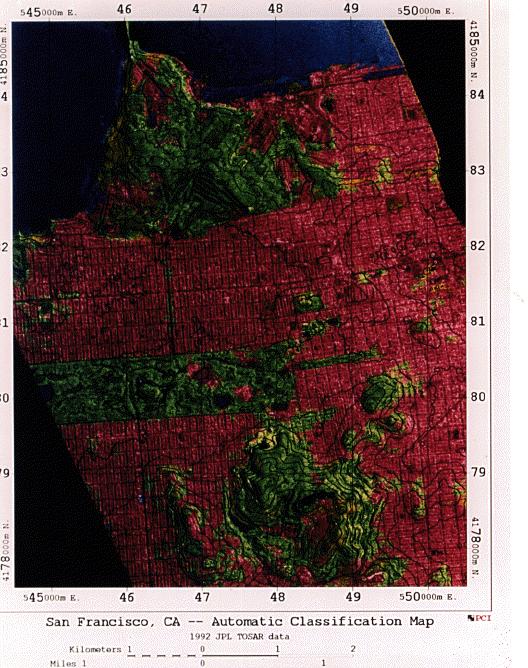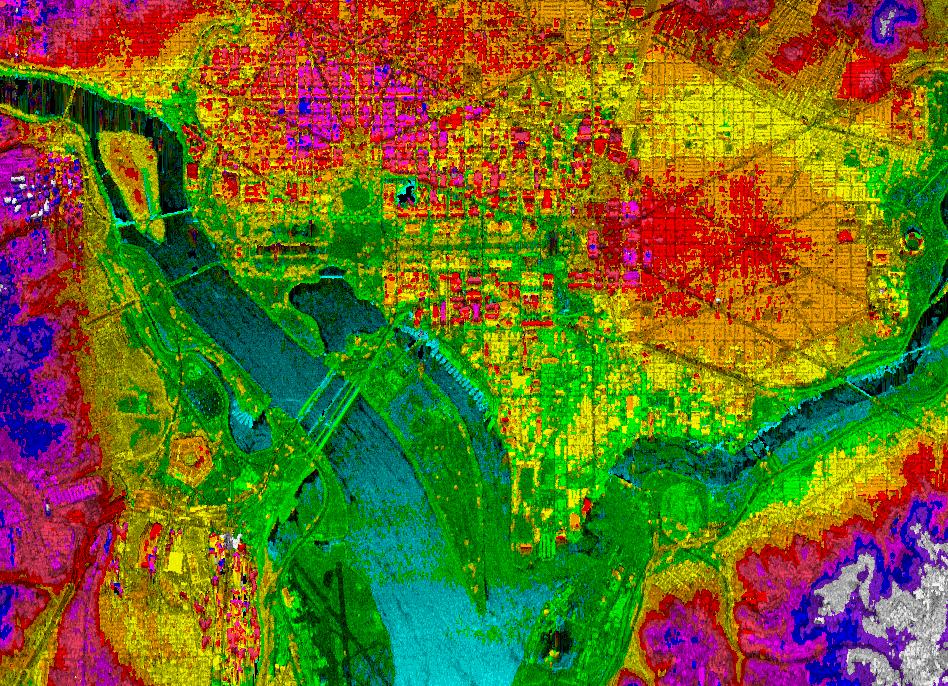



Interferometric Synthetic Aperture Radar (IFSAR) is an innovative technique which uses synthetic aperture radar (SAR) images from two spatially separated apertures and measures the phase difference between corresponding pixels in the two images as a measure of the path difference from the pixel to each aperture. The displaced synthetic apertures provide an interferometric baseline from which the elevation measurement of each pixel may be made, and may be achieved by multiple antennas on the same platform or by multiple passes of a single antenna SAR. The technique produces the powerful combination of SAR imaging with con-registered height data.
ARPA began a program in 1992 to develop this technology for the low cost production of digital terrain elevation (DTE) data. Radar techniques ensure that the capability will be robust and offer advantages over optical techniques, including day/night, all-weather, through smoke or cloud-covered conditions, high collection and processing rates, and lower cost through completely automated DTE production. An IFSAR system in a Learjet aircraft has been developed which meets the program goals of 3 meters height accuracy at 100 square kilometers per minute collection rate. The combination of low cost and high performance will not only meet the military need, but promises to have significant impact on civil and commercial users of such data, especially in cartographic applications where an advanced civil capability will mutually benefit the Department of Defense (DoD).
This IFSAR map product of San Francisco was obtained by processing IFSAR data from the JPL AIRSAR system. This map covers an area of 6 by 7.5 kilometers and is colored according to one of the four classification categories: water, fields, forests, or urban areas. The classifications were automatically derived from radar-measured attributes such as interferometric correlation coefficient, radar backscatter, and terrain slope. Also shown on the map are elevation contours and an overlaid grid with UTM coordinates. Clearly seed in this image are the Presidio, Golden Gate Park and urban areas just south of the Golden Gate Bridge.

This IFSAR image of Washington, DC, was produced by the Jet Propulsion Laboratory (JPL) as part of the program's research in the use of IFSAR in urban environments, where special problems related to shadowing and multiple reflections are anticipated. This data was collected in June 1993 using the JPL AIRSAR on board the NASA Ames DC-8 aircraft. The radar backscatter image is colored according to the radar-measured terrain elevation. The regular grid of DC roads are clearly visible as are familiar landmarks as the Pentagon, Capitol Building, Lincoln Memorial, and RFK stadium.
